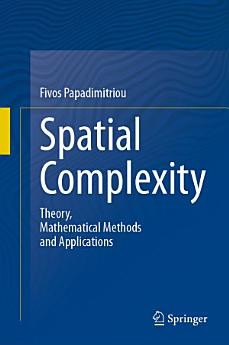Spatial Complexity: Theory, Mathematical Methods and Applications
Nov 2020 · Springer Nature
Ebook
298
Pages
reportRatings and reviews aren’t verified Learn More
About this ebook
This book delivers stimulating input for a broad range of researchers, from geographers and ecologists to psychologists interested in spatial perception and physicists researching in complex systems.
The mathematical and cartographic experiments described in this book lead to hypotheses and enigmas with ramifications in aesthetics and epistemology.
How can one decide whether one surface or spatial object is more complex than another?
What does it require to measure the spatial complexity of small maps, and why does this matter for nature, science and technology?
Drawing from algorithmics, geometry, topology, probability and informatics, and with examples from everyday life, the reader is invited to cross the borders into the bewildering realm of spatial complexity, as it emerges from the study of geographic maps, landscapes, surfaces, knots, 3D and 4D objects.The mathematical and cartographic experiments described in this book lead to hypotheses and enigmas with ramifications in aesthetics and epistemology.
About the author
Dr.Dr. Fivos Papadimitriou, B.Sc. (Athens), M.Sc. (Athens), M.Sc. (Paris), M.Ed. (Patras), Ph.D. (Budapest), Ph.D. (Oxford), is at the University of Tübingen. He has created new mathematical formulas, models and methods for measuring landscape complexity and spatial complexity.
Rate this ebook
Tell us what you think.
Reading information
Smartphones and tablets
Install the Google Play Books app for Android and iPad/iPhone. It syncs automatically with your account and allows you to read online or offline wherever you are.
Laptops and computers
You can listen to audiobooks purchased on Google Play using your computer's web browser.
eReaders and other devices
To read on e-ink devices like Kobo eReaders, you'll need to download a file and transfer it to your device. Follow the detailed Help Center instructions to transfer the files to supported eReaders.





